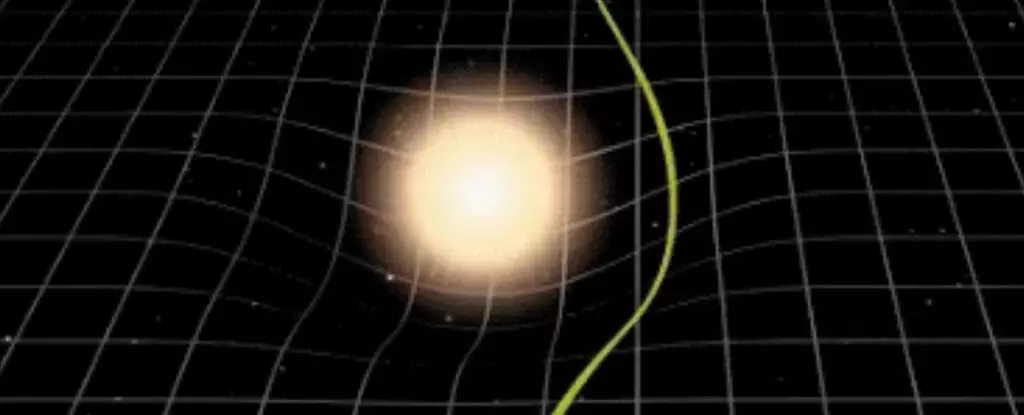The potential threat of an asteroid colliding with Earth has been a topic of scientific and public interest for decades. The ability to predict such catastrophic events often hinges on our understanding of celestial mechanics and the behavior of light in the gravitational field of massive objects. A recent breakthrough by physicist Oscar del Barco Novillo from the University of Murcia in Spain introduces a novel mathematical equation that offers improved accuracy in calculating the gravitational bending of light (GBL). This advancement could significantly enhance our ability to track small celestial bodies, such as comets and asteroids, on a collision course with Earth.
Gravitational light bending refers to the phenomenon where the trajectory of light is altered as it passes near a massive object, such as a planet or star. This effect, as first described by Einstein’s theory of general relativity, can lead to significant discrepancies in the observed positions of celestial bodies. The ability to accurately calculate GBL is crucial for astronomers seeking to map the cosmos and anticipate potential hazards posed by space debris. Del Barco Novillo’s work addresses this challenge by providing an advanced equation designed to enhance the precision of GBL calculations for static massive objects like the Sun and planets within our Solar System.
Historically, notable figures such as Newton and Einstein have explored GBL, but their methods often left room for improvement. Del Barco Novillo’s equation marks a paradigm shift due to its emphasis on finite distances during calculations instead of assuming an infinite extent, which has been a limitation in previous models. This adjustment is significant, as it introduces a level of realism that better aligns with observable celestial phenomena.
Furthermore, the introduction of a material medium approach—wherein celestial bodies are analyzed similarly to light passing through varied media on Earth—yields more precise calculations. This method draws parallels between the bending of light in space and the common experience of light refracting through a glass of water, providing an intuitive framework for understanding GBL.
Del Barco Novillo substantiated the accuracy of his equation through a series of numerical simulations and comparisons with existing methods, including the Shapiro time delay formula. The consistency between the new equation and these established frameworks signifies its potential to redefine how astronomers calculate the positions and orbits of celestial bodies. This validation is not merely an academic exercise; it holds real-world implications for tracking potentially hazardous asteroids that might threaten Earth.
The benefits of a more accurate calculation of GBL extend beyond asteroid detection. Enhanced precision in tracking celestial objects also carries implications for various fields within astronomy and astrophysics. For instance, the ability to pinpoint distant stars—like Proxima Centauri, the closest known star system to our Solar System—could improve our understanding of stellar formation and evolution.
Moreover, this breakthrough could be instrumental for missions such as the European Space Agency’s Euclid project. By charting billions of galaxies over expansive distances, this mission aims to unravel the mysteries surrounding dark matter and dark energy. A refined understanding of GBL introduced by Del Barco Novillo’s equation would enable astronomers to achieve greater accuracy in their observations and analyses, ultimately contributing to the body of knowledge about our universe.
In an era where cosmic threats loom large in public consciousness, particularly the risk of asteroid impacts, advancements in our understanding of gravitational dynamics are both timely and critical. Oscar del Barco Novillo’s equation represents a significant contribution to astrophysical research, providing scientists with a robust tool to navigate the complexities of space. As we refine our detection capabilities, the prospect of thwarting potential cataclysms becomes more feasible, lending a sense of security amid the vast uncertainties of our universe.


Leave a Reply